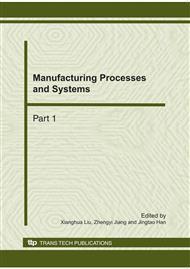p.967
p.974
p.979
p.983
p.987
p.994
p.998
p.1003
p.1007
Research on the Pavement Performance of Recycled Asphalt Mixture Processed by Microwave
Abstract:
In order to evaluate the pavement performance of recycled asphalt mixture processed by microwave, an experimental method was designed to compare the microwave heating with the conventional heating in recycling affection of asphalt mixture. The samples AC-13 were produced. Conventional and microwave heating performance of modified asphalt recycling test including the rutting test, the trabecular cold bending test, the Marshall immersion test, the freeze-thaw split test, and the splitting strength mechanical properties were test. The experimental results show that it is roughly the same in the high temperature stability and mechanical properties of these two areas, and at low temperature cracking resistance the use of microwave processing can improve the low temperature flexibility to reduce the surface temperature seasonal prone temperature shrinkage cracks and fatigue cracks. The stability on the water by using microwave processing can enhance the asphalt and aggregate adhesion so that mixture enhanced resistance to water damage, there is a better role in improving the water stability. These results could promote microwave recycling and provide the basis for the promotion applications.
Info:
Periodical:
Pages:
987-993
Citation:
Online since:
October 2010
Authors:
Price:
Сopyright:
© 2011 Trans Tech Publications Ltd. All Rights Reserved
Share:
Citation:


